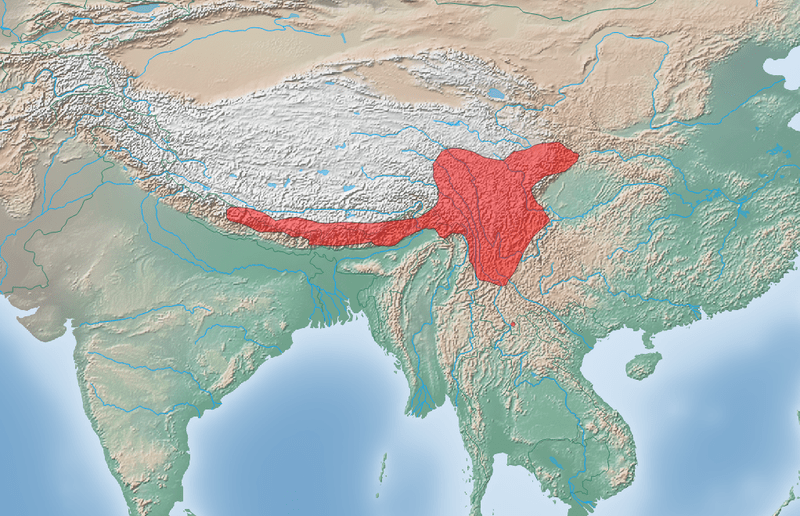
First revision of protected species list in 30 years provides unique opportunity.
On Monday, a red panda was photographed eating cherries at Wawushan Nature Reserve in Meishan City of southwest China's Sichuan Province. The visit was brief but delightful for the fortunate reserve staff who witnessed the animal eat and then retreat back into the forest.
The timing of the red panda’s visit was interesting with the National Forestry and Grassland Administration and the Ministry of Agricultural and Rural Affairs’ recent announcement to update to their national list of endangered species and has started to collect public opinion. This is the first time the list has been reviewed and updated since 1988.
This proposal is part of China's efforts to augment protective regulations on threatened wildlife and Red Panda Network (RPN) saw this as a critical opportunity to highlight red panda (小熊猫 Ailurus fulgens) conservation in the country’s policymaking.
Last week, RPN submitted a formal recommendation to strengthen conservation of the red panda by changing its status on China’s National Protected Wildlife Species List from Class II to Class I.
This isn’t the first time RPN — an international nonprofit organization, started in 2007; committed to the conservation of wild red pandas and their habitat through the education and empowerment of local communities — worked to achieve policy-level change. In 2016, RPN provided technical and financial support to the Nepali government for the first national survey of red pandas, and as a result Nepal approved a National Red Panda Conservation Action Plan in 2019.
 Red panda cubs at a zoo in China.
Red panda cubs at a zoo in China.
The red panda is listed as Endangered on the IUCN Red List of threatened species and included in Appendix I of the Convention on International Trade in Endangered Species (CITES). Nepal’s National Parks and Wildlife Conservation Act, 1973 also listed this species as a protected species.
The red panda is found in temperate broadleaved and coniferous forest with bamboo undergrowth in Bhutan, China, India, Myanmar, and Nepal. There is strong evidence that the species is in decline across much of its range due to threats including habitat loss and fragmentation, predation and disease from domestic animals, climate change and poaching. In China, red pandas are found in Sichuan, Yunnan, and Tibet, and although conservation efforts have improved in recent years the species has disappeared from large parts of its historic range.
A Population Habitat Viability Assessment (PHVA) for red pandas in China was conducted in 2012 by experts from the Chinese Academy of Sciences (CAS), Institute of Zoology (IOZ); Rotterdam Zoo; and the IUCN SSC Conservation Breeding Specialist Group (CBSG) and Small Carnivore Specialist Group (SCSG) with support from RPN. The PHVA report recommends strengthening protection for the red panda as a high priority action item.


Wild red panda in Nepal. © Axel Gebauer.
More recent research from the Chinese Academy of Science proposes that the red panda may actually comprise two phylogenetically-distinct species, one found mainly in China and the other in the Himalayas. This possibility further strengthens the need for enhanced protection, since each of the new red panda species would have a much smaller population than the currently-recognized species.
RPN’s hope is for this recommendation is to provide usable information and guidance in China’s decisionmaking process so that red pandas can continue to eat cherries — while representing local biodiversity as an important, flagship species — in the Wawushan Nature Reserve and throughout their range in China.
